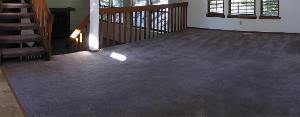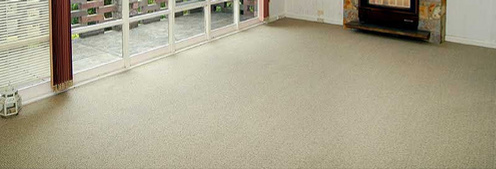Carpet Cleaning Tips and Tricks

This list will help you deal with most common carpet stains that might occur.
Stop using deodorizing dust for cleaning carpets.
The popular deodorizing powders you can buy and sprinkle over your carpet are terrible for carpeting. They not only clean nothing, the dust settles into the pile of the carpet, getting stuck in the carpet fibers. This causes flattening and cutting of the fibers, and traps dust and allergens.
No matter how much you try, you can never vacuum all of this dust out of your carpet. The only way to remove this dust is with a water injection truck mounted unit, like we use at Floor Essence
Use water based aerosol deodorizers, like Febreze instead.
Vacuum your carpets often
Vacuuming carpets removes loose dirt and contaminates from carpeting that cause the fibers to compact and break.
Be sure to vacuum behind furniture and along base boards. These areas are perfect places for allergens and insects to hide.
Vacuum heavy traffic areas with a criss-cross pattern to do a better job of removing debris.
When vacuuming take your time.
Vacuuming a carpet is not a rush job. Go over the area slowly, allowing the vacuum cleaner time to pull dirt and debris out of the carpet fibers. This is especially important for deep pile carpets.
When you vacuum, go over each area several times, working from different directions. Because of the way carpet fiber lies down, one pass will not do a very good job of cleaning the carpet
Vacuum wall to wall carpet in small sections at a time
By breaking the floor area into quadrants and clean one quadrant at a time.
When you vacuum, go over each area several times, working from different directions. Because of the way carpet fiber lies down, one pass will not do a very good job of cleaning the carpet.
Blot, don't scrub
When spills occur, use white towels or paper towels to absorb the stain as much as possible; do not use a scrubbing motion on the carpeting. Scrubbing will only drive the stain into the carpeting.
By blotting, you remove as much of the stain from the top of the carpet, instead of driving it down into the base of the carpet.
Dilute the stain with COLD water.
There is an old saying that "The Solution to Pollution is Dilution" and it certainly applies to carpets.
Blot up all the stain you can, then dilute the stained area with cold water, blotting up the liquid as you go. This will remove as much of the stain as possible before resorting to harsher cleaning chemicals or methods. A wet-dry vacuum makes this much easier.
In almost all cases, using hot water will set the stain.
Be careful with cleaning solutions.
Test cleaning solutions on an inconspicuous section of the carpet before using them.
If you can, keep a few carpet scraps from the initial installation to use for this purpose.
Don't let stains sit.
Respond to spills and stains as soon as you see them. Fresh stains have not had time to penetrate the fibers, nor dry into the fiber or base. This makes it much easier to clean and remove than dried stains.
Use cold water to dilute and white towels to blot with. In many cases this will completely remove a stain.
Completely dry the wet area after cleaning
After cleaning, use a plain white towel to gently raise the fibers of the carpet and absorb moisture.
If the area is very wet, place white folded paper towels ¼ inch thick over the spot and put a weight on top. This will absorb almost all of the moisture.
Make sure the weight will not be damaged by the absorbed water. If you use a book, place tin foil on the top of the paper towels.
You can also use a jar or pot of water for this purpose. Just don't knock it over by accident.
Use a homemade cleaning solution for stains.
Add 1 teaspoon mild detergent and 1 teaspoon white vinegar, to 1 quart warm of warm water.
Apply this solution to the affected area and let dry, then Vacuum the area gently to remove the remains of the solution.
If the spot remains, apply the process again.
Use white wine to clean red wine spills
Use the white wine to dilute the red wine, blotting as much of the wine as possible.
Repeat the process with water
Cover the spot with liberal amounts of table salt, wait 10 minutes, then vacuum the salt up.
To clean candle wax from the carpet:
Pull as much of the wax up as possible
Get a paper bag, and an electric iron.
Place the paper bag over the spot and use the iron at a medium heat, and pass the iron over the spot.
The candle wax will melt and be absorbed into the paper bag. Move the bag around frequently in order to have a fresh area over the spot to help the wax wick into the paper.
How to deal with an oily residue left over after a stain is cleaned
Clean with the cleaning solution above first, repeat as necessary to remove the stain.
On lighter carpets, put a deep layer of talcum powder over the remaining oil or grease spot.
Let the powder sit for a day or so, then vacuum. The powder will absorb the oil or grease. Then vacuum the powder up.
To clean oil or grease stains.
On lighter carpets, clean with the cleaning solution above first, repeat as necessary to remove the stain.
On lighter carpets, put a deep layer of talcum powder over the remaining oil or grease spot.
Let the powder sit for a day or so, then vacuum it up. The powder will absorb the oil or grease. Then you simply vacuum the powder up. Think of it as oil absorbent. (Works on clothing too!).
To clean mud from a carpet:
Clean up as much mud as possible first, without rubbing or scrubbing. Rubbing and scrubbing will drive the mud into the fibers deeper.
If you have a wet dry vacuum, take an empty dish detergent bottle and fill with water.
Lay the vacuum nozzle beside the mud, and use the bottle to squirt a stream of water into the mud, vacuuming as you go along

